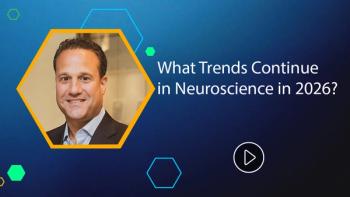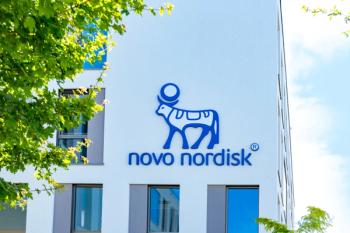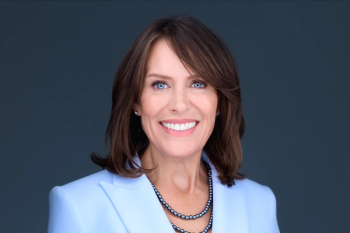
Q&A With Natalie DiMambro, vice president, product commercialization and training at Within3
DiMambro discusses how companies can update their systems and strategies to collect data which ensures that marginalized groups and diverse voices are included.
Many life sciences companies are changing the way that they collect data in order to ensure that marginalized groups and diverse voices are included. Here, Natalie DiMambro, vice president, product commercialization and training at Within3, discusses how companies can update their systems and strategies to achieve this.
Pharm Exec: What barriers exist for diverse voices in the pharma industry?
DiMambro: The biggest barrier that I see, and this goes along with the change management side of things, is just the old ways of thinking. Oftentimes when I’m working with clients, there’s resistance, which is natural. Often, our systems are set up in a way where it’s hard to get things to change and do something differently with the way that the organization is set up, the tools that they have internally, and the tools that they can onboard. That comfort zone that we all live in tends to be a barrier.
If you ever try to change somebody’s mind about something that they know and they know how to do well, there has to be an impact from doing it a different way. Our job, from the technology side, is to make sure that we’re not just coming up with a tool that serves us but has an impact on the way that they work so that they can test it, pilot it, understand it, and then potentially overcome that barrier of old thinking and say, “You know, this might be a better way to do something.”
Some people adopt quickly, and you lean on those quick adopters in the company to help make the case. We want to make sure that we’re measuring impact, so that it does make sense and we’re not just taking on a tool to prove a point. If the tool isn’t effective, that can be a challenge.
Pharm Exec: How are new insights into management techniques amplifying diverse voices?
DiMambro: New techniques, new technologies, new feature sets, all those things, are built in such a way that creates an environment for diverse voices to speak, whether those voices are patients, underserved populations, or groups that aren’t often asked questions—sometimes it’s the nurses and the technology assistants on the floor. They’re using the tools, devices, and treatment modalities, but nobody has ever asked them about their experiences. There needs to be an environment created so that they can share openly.
If I’m going into a market research focus group and I’ve gathered the same typical people in a room who are available that day, that may not be the best environment to share sensitive information for a patient.
Think about things like anonymizing the session. In our case, we have an asynchronous school where people can come in and anonymize their names, their identities, and even the environment that they’re in. They’re sharing their experience in a way that they feel like they can tell the truth. It’s thinking about what it might be like from their perspective.
On the diverse voices side, maybe with underserved communities, populations that don’t often get heard from, sometimes they have that unconscious bias being in a room with people and give answers that we want to hear. By offering a platform or environment where they can speak openly allows for some of that conflict to come up and be exchanged in a way so that we’re getting that insight and amplifying those voices clearly.
Having a toolset that is helpful and allows for trust and truth to be shared in a transparent way does take some different ways of thinking. We’re not just gathering people in a room if that’s not the drive. Do we really need to take patients out of their home environment to get answers? Is there another way to do this where we can get what we need from the experience without taxing those that are offering it to us?
The toolset is huge and includes language translation, so that people can speak openly and understand what’s happening in the environment or who is asking them the question. It could be anonymized, privacy settings that you turn on or off, depending if the need is there. It’s also thinking about how you format those engagements. Is it better to have regions speaking with each other, as opposed to talking across regions? Will you get more honest information if your demographic groups match, when patients are with people that are in their community, or are in their faith, or whatever group you’re gathering?
Pharm Exec: How are the current methods of enhancing these voices falling short?
DiMambro: Sometimes it is challenging and difficult because you’re thinking of a different way to operate in your structure or system. Sometimes, that may take different resources, different types of skill sets to handle new information coming in. If I now can be with three engagements at one time (patients, clinicians, and payers) because I have a tool that allows that, all those insights are going to come in at the same time. Am I set up in such a way to analyze those insights, to take all of that together, and to move my plan along faster?
That temptation to go back to the easiest way of doing things is always there. We see that a lot with clients; they’ll get so close to trying a new way of engaging stake holders, then I see them decide to just do the traditional method that they know how to do. That’s why the teams you have with your technology are really important. Having a consulting expert, having a client success team who are actually there, working with you, can be really useful. They can step in and let you know how things work and how other clients have done it. It can feel difficult, especially with everyone working from home. It can feel like you’re taking on a challenge on your own, and there’s nobody next to you to say, “Hey, I got you, we can do this.”
It’s challenging, but with a bigger payoff. We can make a bigger impact. We can get bigger sample sizes from more voices, people, and patients. Let’s take the leap, and then let’s make sure we report back on the impact it had so that we can say, “This was worth the challenge. This was worth the additional steps to reorganize the way the team is structured or how we’re pulling in insights.”
Pharm Exec: In what ways are patients not being listened to adequately enough?
DiMambro: A lot of organizations have set up patient centricity, focused initiatives, and patient advocacy teams. All of that is wonderful, especially when talking to team members about where the patient’s voice can be integrated. Often, they’re listening to patients after they’ve developed the protocol, education material, the visual aid, the plan. Then they’ll get reaction from patients: “What are your thoughts on this, how do you feel about this visual, how do you feel about this protocol, would you sign up for this?” But it’s very late in the game.
Where I see they’re not being listened to enough is early in development, and that can be across any of the verticals.
It’s not just the compassionate path you should be taking, it’s good business. It means less revisions. It can save millions of dollars if you get the patient input on the protocol side earlier on. It’s a more efficient way to work.
Pharm Exec: How do we improve the role of patient advocacy seats on advisory boards?
DiMambro: We work a lot with our customers and clients in this area. They have patient advocacy teams now, which is wonderful, and you can see them working hard. A technology team like ours can support those patient advocates and the teams dedicated to that by sharing information and being a bridge from one company to another. Not for proprietary information but for operational information—how other companies were successful and the types of results they got from incorporating patients with the advisory board or within the strategy ahead of time. It’s exciting for me because I’ve been in pharma a long time, and I love being able to plant the seed of an idea and watch somebody’s face light up because they didn’t know that they could potentially bring in an anonymized patient group earlier in the clinical trial design, get their insights on the criteria on some of the steps they have to take to be included in the trial, then have the clinicians or those designing the trial react to that real time.
That is possible. You can get those insights earlier in the process and effect the way that you design your protocol, without giving any proprietary information out. That’s the step that our team works on, how to format these engagements in a way that gets your insights faster. I have faith in those teams that I’m working with because they’re all scientists, medical professionals, and strategic thinkers. When they hear that that’s possible, they go back to their teams and they ask, “A company like ours did that, here’s what they did, now how can we maybe take advantage of a tool like this?”
Newsletter
Lead with insight with the Pharmaceutical Executive newsletter, featuring strategic analysis, leadership trends, and market intelligence for biopharma decision-makers.





